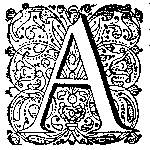Smelling Disease and Death in the Antwerp Church of Our Lady, c. 1450-1559
DOI:
https://doi.org/10.51750/emlc10006Keywords:
smellscape, miasmata, spatial experience, parish church, iconology, Antwerp Church of Our LadyAbstract
Early modern societies were pervaded by smells and odours, but few traces have survived that offer a glimpse of the olfactory experience. This essay reconstructs this lost early modern ‘smellscape’, focusing on the smell of disease and death in the late medieval Antwerp Church of Our Lady (c. 1450-1559). Bustling cathedrals and parish churches could be a minefield of life-threatening odours, as there was a strong interaction between externally perceived body odour and a person’s inner sweetness. Through devotional objects and liturgical rituals, however, it was possible to protect oneself from the stench of both living and dead parishioners. Exemplary markers for the shared discourse of smell on a medical and spiritual level were aromatic prayer beads and purifying incense.
Downloads

Published
Issue
Section
License
Copyright (c) 2021 Wendy Wauters

This work is licensed under a Creative Commons Attribution-NonCommercial 4.0 International License.





